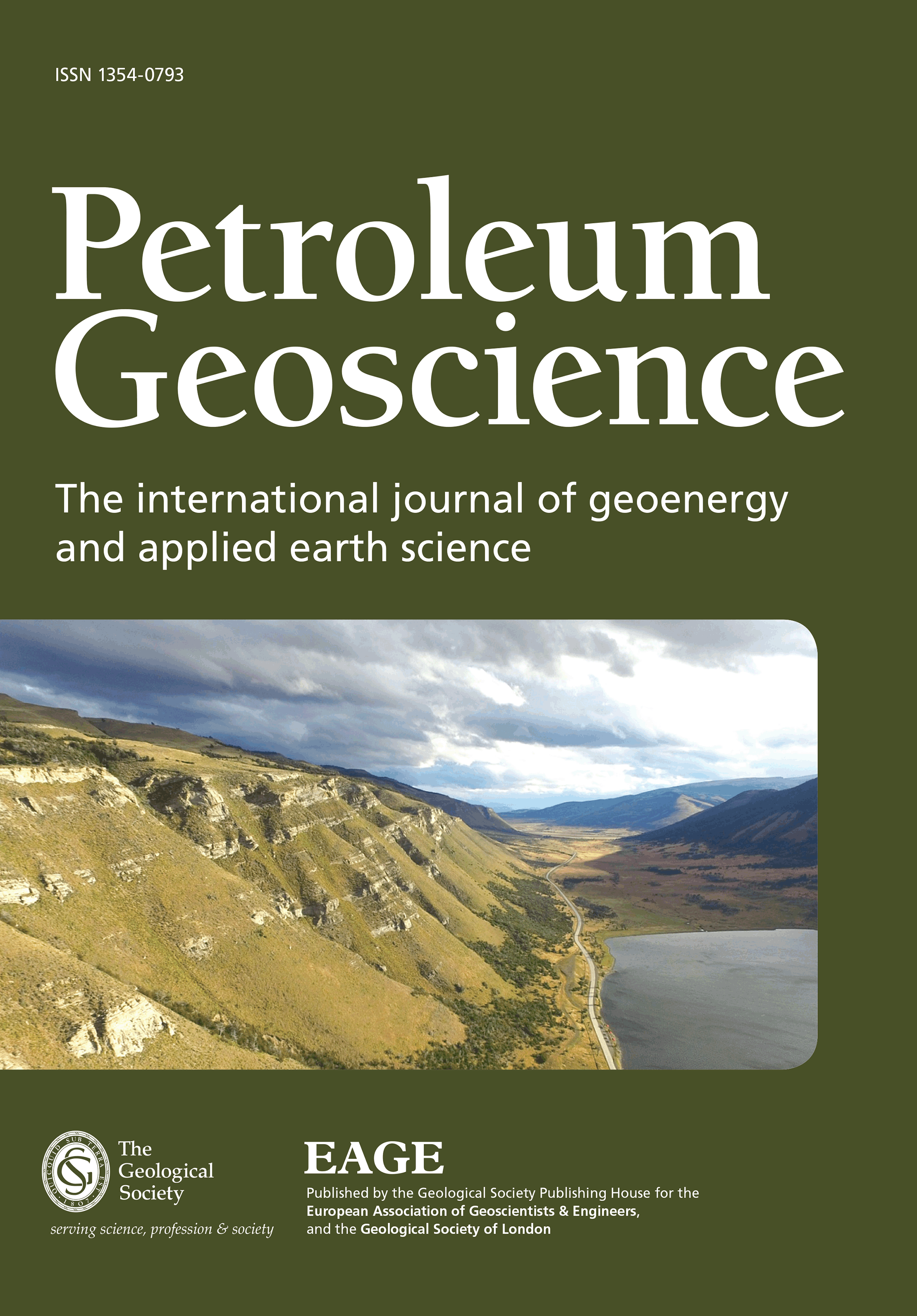-
oa Defining lithic patterns within river-dominated delta deposits for geostatistical simulation
- Source: Petroleum Geoscience, Volume 27, Issue 1, Feb 2021,
-
- 25 Jul 2019
- 05 Jan 2020
- 04 Feb 2020
- 08 Apr 2020
Abstract
Reservoir development forecasts depend on accurate descriptions of the spatial distribution of rock properties that impact subsurface fluid-flow pathways and volume connectivity. Reservoir models constructed using geostatistical methods combine analogous facies dimension data with sparse subsurface data to predict spatial variations in rock properties. This study uses a physics-based depositional process model to define realistic facies variations within a river-dominated delta deposit formed during multiple shoreline regressions and transgressions. Geostatistical models are conditioned to varying amounts of information extracted from the depositional model to examine how well they reproduce the facies patterns. Reservoir simulation is used to examine the impact of analogous dimension data and varying conditioning constraints on reservoir performance predictions of water displacing oil. The dimensions of surface depositional features underestimate the continuity of preserved facies patterns, proportional grids following major flooding surfaces allow significantly better predictions than uniform rectangular grids, and trend constraints are more important when defined facies correlation length is significantly less than well spacing. When geostatistical model parameters are poorly chosen, reservoir simulation of the resulting weakly-structured facies patterns overpredict recovery and water breakthrough time. It is demonstrated that process-based depositional models can be used to optimize geostatistical model construction methods and input parameters to reduce uncertainty of reservoir development assessments.
[open-access]



